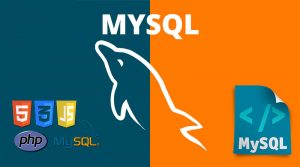What is chmod Linux command
chmod command or “change mode command”, and as that name implies, the chmod command is used to change the mode of Unix/Linux files.
In other words it is used to define the way a file can be accessed.
chmod command Syntax
chmod options permissions “filename or directory”
chmod sections description :
- Options :the following table describe the option list
Option Description -f, –silent, –quiet suppress most error messages -v, –verbose output a diagnostic for every file processed -c, –changes like verbose but report only when a change is made -c, –reference=RFile use RFile’s mode instead of MODE values -R, –recursive change files and directories recursively –help display help and exit –version output version information and exit - Permissions Using Numeric mode :The format of a numeric mode is ‘augo‘ ,A numeric mode is from one to four octal digits (0-7),to set permission you pass the numbers permission to owner group everyone for example chmod nnn is setting permission n to owner and the second n to group and third n to everyone (n is the numeric mode that we will describe bellow) :
- 4 maps for “read“
- 2 maps for “write“
- 1 maps for “execute“
- 0 maps for “no permission.”
- 7 is combination of permissions 4+2+1 (read, write, and execute)
- 6 is combination of permissions 4+2+0 (read, write, and Not execute)
- 5 is 4+0+1 (read, no write, and execute).
- Permissions Using symbolic Permissions Notation :The letters u, g, and o mapping to “user“, “group“, and “other” in order. and the letters “r“, “w“, and “x” stand for “read“, “write“, and “execute“, respectively.and you will need to use The equals sign (=) between the u,g,o and rwx as example:chmod u=rwx,g=rx,o=w example.txtThis is means apply read write and execute permissions to owner, and assign read and execute to group , and assign write permission to other.
owner ,No permissions to group and everyone example3.txt
chmod u=rwx example3.txt
#-rwx——
chmod Examples:
chmod Examples Permissions Using Numeric mode :
Setting Read/Write/execute to owner Read/execute to group and everyone else to example1.txt
chmod 755 example1.txt
#-rxwr-xr-x
Setting Read/Write to owner Read/execute to group and read only to everyone else to example2.txt
chmod 664 example2.txt
#-rw-rw-r–
Setting Read/Write/execute to owner ,No permissions to group and everyone example3.txt
chmod 700 example3.txt
#-rwx——
chmod Examples Permissions Using symbolic Permissions Notation :
Setting Read/Write/execute to owner Read/execute to group and everyone else to example1.txt
chmod u=rwx,g=rx,o=rx example1.txt
#-rxwr-xr-x
Setting Read/Write to owner Read/execute to group and read only to everyone else to example2.txt
chmod u=rw,g=rx,o=r example2.txt
#-rw-rw-r–
Setting Read/Write/execute to owner ,No permissions to group and everyone example3.txt
chmod u=rwx example3.txt
#-rwx——



